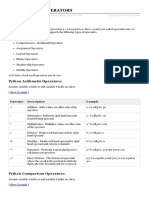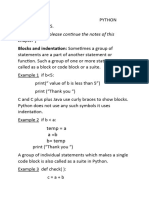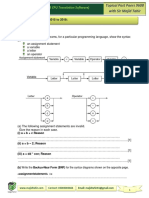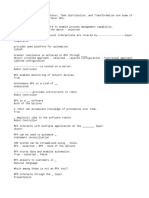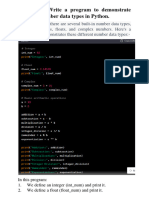0% found this document useful (0 votes)
31 views5 pagesPython Notes by Ankush Chap-08-Operators
This document is a tutorial on operators in Python, explaining their definition and types, including arithmetic, comparison, assignment, logical, identity, membership, and bitwise operators. It provides examples of each type of operator and details on their usage and precedence. Additionally, it includes a cheat sheet summarizing the operators and their functions.
Uploaded by
paidpdfnotesCopyright
© © All Rights Reserved
We take content rights seriously. If you suspect this is your content, claim it here.
Available Formats
Download as PDF, TXT or read online on Scribd
0% found this document useful (0 votes)
31 views5 pagesPython Notes by Ankush Chap-08-Operators
This document is a tutorial on operators in Python, explaining their definition and types, including arithmetic, comparison, assignment, logical, identity, membership, and bitwise operators. It provides examples of each type of operator and details on their usage and precedence. Additionally, it includes a cheat sheet summarizing the operators and their functions.
Uploaded by
paidpdfnotesCopyright
© © All Rights Reserved
We take content rights seriously. If you suspect this is your content, claim it here.
Available Formats
Download as PDF, TXT or read online on Scribd
/ 5



















